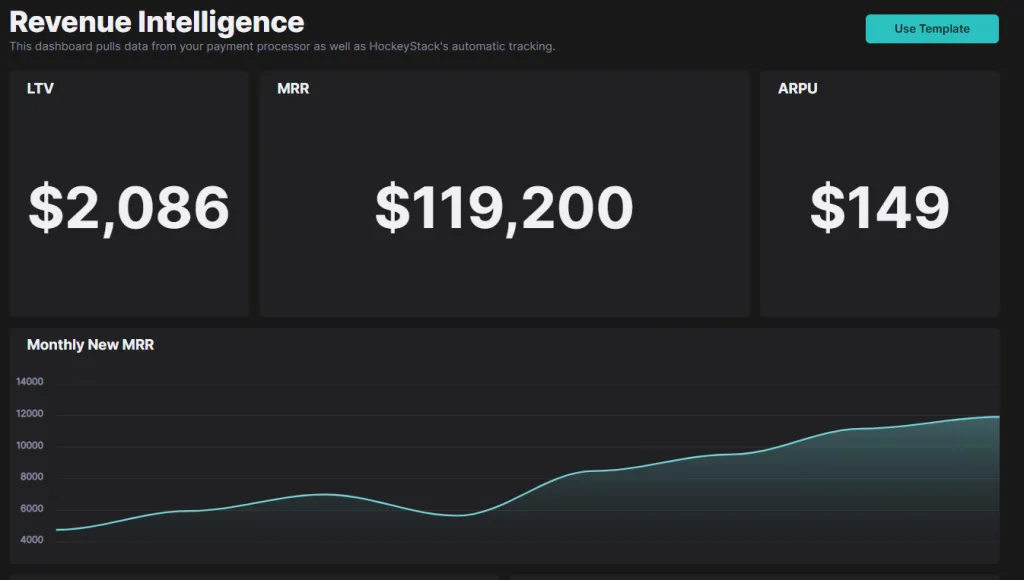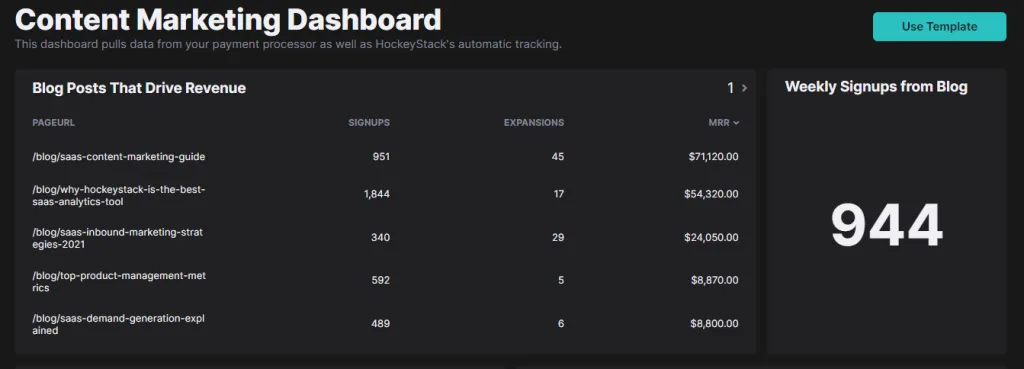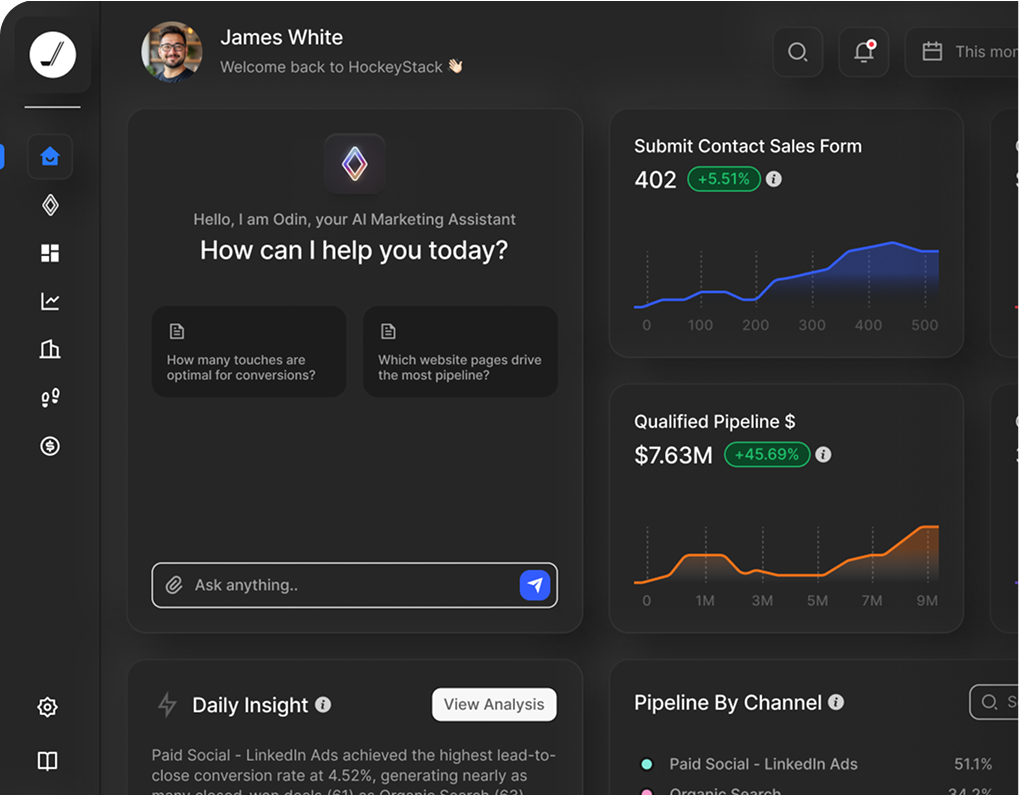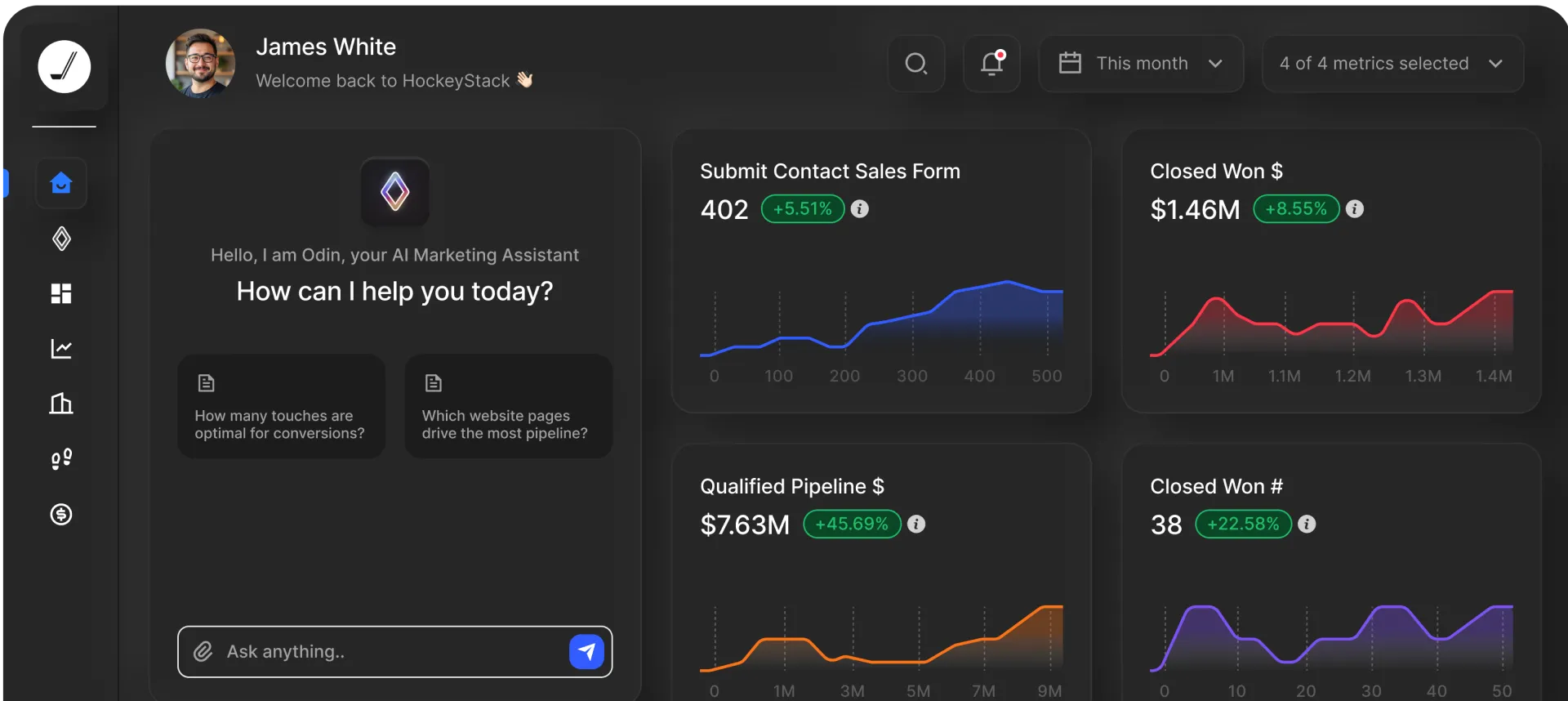Ultimate Guide To B2B SaaS Data Analytics

Ultimate Guide To B2B SaaS Data Analytics

The outlook for growth of the SaaS industry is huge. It’s expanding at a rate of 18% each year and is characterized by changes such as a remarkable interest in self-service analytics.
Increasingly, with a focus on digital reality, the use of analytics tools to better understand customers and provide them value is becoming more critical. For B2B SaaS companies, tracking their business intelligence is not a choice but a necessity to survive in the competitive market.
In this article, I will help you stay ahead of the game by sharing the top B2B SaaS analytics tools and metrics that you can use to track and improve the chances of success for your company.
What is B2B SaaS Analytics?

For B2B SaaS businesses, determining and tracking KPIs is essential to make data-driven decisions and drive business growth. The process that these companies follow to track and analyze their performance in various areas is called SaaS analytics.
Using B2B SaaS analytics tools, SaaS companies can
- track customer engagement
- determine causes of churn
- project future revenue
- identify best campaigns and channels for traffic and conversions
- better allocate their resources for growth
B2B SaaS analytics software can be used to perform analysis by product, marketing, sales, and revenue:
- Product analytics is the process of collecting, analyzing, and reporting data on how users interact with your product. This includes how and when customers realize your product’s value, how many of them churn, and loyal or disloyal they are.
- Marketing analytics allows you to measure the impact of your marketing efforts. You can discover how many of your users convert, what sites they come from, and how your CAC compares to the average CAC of your industry.
- Sales analytics enables you to predict the efficiency of your sales strategy.
- Revenue analytics give insight into recurring revenue, profitability, and growth, which helps you attribute revenue, forecast it and allocate your resources effectively.
Although many metrics can be used to measure performance in these areas, you should focus on the essential ones, which I’ll list below.
B2B SaaS Data Analytics Metrics

In this section, I’ll go through the top product, marketing, sales, and revenue metrics that you should be tracking.
B2B SaaS Product Metrics
Activation Rate
When a user reaches a specific action in the onboarding process known to provide value, the user becomes ‘activated.’
The activation rate refers to the number of users who completed the key action in the onboarding process in a given period. This metric is vaguely defined since key actions differ from one business to another. So when measuring or calculating this metric, the initial step is to determine what these actions are.
Activation rate is a crucial metric because it directly influences revenue. If customers realize the value of your product during the trial phase, only then will they become convinced to pay for it. Moreover, with this rate, you can identify which phases of the process users are more prone to get activated in, allowing you to optimize your spending on acquiring and activating new customers.
Churn
Churn rate is the rate of subscribed customers that stop using your product. There are many reasons why customers churn. It may be due to a failure to meet customers’ expectations, poor onboarding or customer service, or a variety of other reasons.
A high churn rate indicates that a lot of customers have stopped using your product, which directly translates to lost revenue. Therefore, the churn rate is crucial for measuring revenue and growth potential. Although some customer churn is inevitable, the number should ideally be low. A general benchmark is 5%-7% for annual churn in the SaaS industry.
To find the churn rate, divide the number of customers who stopped using your product in a period by the number of customers you had at the beginning of that period.
NPS
Net Promoter Score (NPS) is a widely used product metric that measures how satisfied, and loyal your customers are with a business or product. It is measured by asking a question that goes like, “How likely are you to recommend product X to a friend or colleague?”
Respondents answer this question on a scale of 0-10, where 0 is least likely, and 10 is very likely. Those who rate you 9-10 are the promoters, and those who rate you 0-6 are detractors. The NPS is found by subtracting the percentage of detractors from the percentage of promoters. The score can range from -100 to 100, where 40 is considered a good score for a SaaS.
B2B SaaS Marketing Metrics

Conversion rate
Conversion rate is an essential metric for marketers. It measures the number of visitors to your site who take a desired action across different marketing channels. Again, each business can define this action differently which is why it's important to know what kind of metrics it would be best for your business to measure. These metrics can include signups, demo requests, purchases, or any other similar metric.
Many factors can affect the conversion rate. These include your value proposition, the design of your landing page, and the relevance and quality of the traffic that's coming in to your web pages.
To find this metric, divide the number of conversions by the total number of visitors. A good conversion rate falls within 5-7% for SaaS businesses, while 8% and above is considered strong.
CAC
Customer Acquisition Cost (CAC), which is the cost of acquiring a new customer, is a crucial metric for SaaS companies to improve ROI and profit margins. The costs that go into CAC are the number of new customers you acquired and your sales and marketing expenses, such as SEO, social media marketing, and salaries.
CAC is especially valuable when measured alongside customer lifetime value (LTV). By calculating the ratio CAC/LTV, you can decide how much money you'll have to spend to get a new paying customer and how much business you can expect from them over the next few months or years. You spend just the right amount to acquire new customers in an ideal model while keeping a healthy LTV. An optimal ratio is 3:1. There isn’t an ideal CAC figure that you should target since CAC can vary greatly depending on the business and the industry that it operates in.
Referral Traffic
Referral traffic is the traffic to your site from other websites. When someone clicks on a link from another site or social media platform to your site, it is registered as referral traffic. The site that links to yours is known as the “referrer.” Some examples of referrers are search engines, social media channels, apps, newsletters, and affiliate links.
Referral traffic is important because it widens the exposure of your content and gets you potential buyers from trusted sources. When high-quality websites link to your site, it increases your domain authority and search rankings.
B2B SaaS Sales Metrics
Meetings per lead
This metric refers to the number of meetings scheduled with a lead before they make a purchase. An initial meeting begins at the interest stage when you want to make the prospect aware of your product. However, a single meeting doesn’t make a lead qualified right away, so you need an ongoing process to result in a qualified opportunity.
Keeping an eye on the meetings per lead is essential because, if the number of meetings required for each lead to ultimately make a purchase is very high, then you might need to optimize the process that your sales team follows.
Demo win rate
Demos are a great way for SaaS companies to promote a product, increase interaction with customers, and convince them that the product can help overcome their problems.
The demo win rate, also called demo-to-close conversion rate, is the number of demos you give that end up in conversions. It is influenced by how well your demo giving skills are, your targeting, and your follow-up strategy.
You can find this rate by dividing the number of demos that lead to a conversion by the total number of demos given over a time period.
ACV (annual contract value)
Annual contract value (ACV) represents the total revenue a contract brings in a year. This revenue can come from different sources, including monthly plans and multi-year subscription plans.
By calculating ACV, you can understand the value of your customers and whether you are pursuing the right clients. Comparing this metric with customer acquisition cost (CAC) can reveal how long it will take you to make a profit from a contract.
B2B SaaS Revenue Metrics
Revenue growth rate
The revenue growth rate is a metric that shows how fast your SaaS is growing. It measures this through your revenue increase over a time period. A decline in revenue growth may be due to your onboarding, UX/UI, pricing and plans, or user churn. There are several revenue-driving channels that you can use to improve revenue growth. These are content marketing, email marketing, free trials, and giveaways.
The growth rate is an essential revenue metric because it indicates whether your SaaS is profitable and sustainable over time. A good growth rate is also attractive to investors. The “rule of 40” for SaaS businesses implies that the growth rate should be at least 40%.
MRR
Monthly recurring revenue (MRR) is the amount of recurring revenue you expect at the end of each month. It does not include all the revenue you make per month since it’s limited to the revenue you get from recurring subscriptions.
SaaS businesses have a subscription-based business model, which makes tracking monthly recurring revenue each month essential. It helps you forecast future revenue and make educated decisions on resource allocation, spending, and scaling.
Monthly recurring revenue is also an indicator of the growth of SaaS companies. A trend of increasing MRR shows that you’re gaining more customers and revenue with each passing month. On the other hand, if MRR decreases over time, it indicates lost customers and revenue through cancellations and churns.
LTV
Customer lifetime value (LTV) shows you an estimate of how much revenue a customer will bring over their lifetime as a customer. There are many benefits of measuring LTV: it helps you predict future growth, determine the success of different marketing channels, and improves financial planning.
LTV is a metric that is highly influenced by churn since it’s directly related to the lifespan of the customer. Though there are many ways to find LTV, one of them is to divide ARPU (average revenue per user) by the churn rate.
Dashboards
Attribution dashboards are another great way to perform analysis for your SaaS company. Employing data visualization elements, dashboards can be used to present data in an extremely easy to understand manner, allowing you to gather key insights without any additional effort.
To evaluate marketing campaign performance, you should know how your strategies on different channels perform. For instance, you can create a revenue dashboard to measure different metrics such as LTV and ACV. This data is helpful for you to identify the channels with the most valuable customers.

As part of your content marketing strategy, it’s essential to know how your content impacts users’ actions on your site. With a content dashboard, you can see the signups, expansions, and MRR gained from each blog post. Having access to this data will help you create more of the kind of content that resonates well with your audience, allowing you to increase conversions and revenue.

Like blog posts, you can determine the best traffic sources to your site through the Sources that Drive Revenue dashboard. By focusing on the best traffic sources, you can increase signups, expansions, and MRR.

There may be certain patterns of churn based on different sources that people use to find your site. You can identify which referrer leads to the most churned users and revenue by creating a Churn by Referrer dashboard. This will help you direct your marketing efforts to the best-performing sources so that you can minimize churn and revenue loss.
It’s great to know your most successful blog posts, but there is another side to the coin. Not all your content will be as successful. With the Churn by Blog Post dashboard, you can see the posts with the most churned users and churned revenue.
Conclusion
B2B SaaS data analytics helps companies uncover vital insights for improved optimization and growth. With HockeyStack’s marketing attribution software, you can figure out which of your content, channels, and sources drive the most and least revenue and which of them lead to the most churned users. That way, you will have the essential data to redirect your marketing efforts and maximize revenue. Together with the metrics and KPIs above, these SaaS analytics tools are key to improving your SaaS data analytics.

More Blog Posts

Ready to see HockeyStack in action?
HockeyStack turns all of your online and offline GTM data into visual buyer journeys and dashboards, AI-powered recommendations, and the industry’s best-performing account and lead scoring.

Ready to See HockeyStack in Action?
HockeyStack turns all of your online and offline GTM data into visual buyer journeys and dashboards, AI-powered recommendations, and the industry’s best-performing account and lead scoring.



